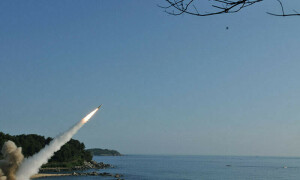KARACHI, April 20: A preliminary report largely based on the observation of a recently turned toxic drain feeding the Keenjhar Lake has blamed lack of coordination among government departments for its longstanding problems, including pollution mainly caused by the release of untreated industrial waste.
The report, prepared by the World Wide Fund for Nature (WWF), stated: “The inactive and irresponsible staff of the concerned departments is the main threat to the wetland’s survival as they do not follow government rules and regulations.”
About the inefficiency of government departments, the report stated that the departments of irrigation, fisheries, wildlife and tourism besides the Karachi Water and Sewerage Board, which were responsible for looking after the lake, worked in isolation due to the absence of a proper mechanism for coordination.
Regarding toxicity in the drain and its effect on the lake, the report stated that the effect of contamination was restricted to a specific area, because winds blowing towards the east were preventing dead organisms and pollutants from entering the lake.
It added that the source of pollutants couldn’t be identified, but it was clear from the enormous loss and poor water condition that some poisonous compounds did enter the water channel ‘accidentally’.
The 4.4-kilometre rainwater drain, located in Jhimpir, feeds the lake that provides livelihoods to more than 50,000 people, mainly fishermen, according the WWF report.
The KWSB chief, meanwhile, submitted his report to the governor and the chief secretary on the drain.
KWSB Managing Director Misbahuddin Farid told Dawn that his report clearly stated that the irrigation department and the Sindh Environment Protection Agency (Sepa) needed to look into the longstanding issue of lake water contamination.
“It’s primarily the job of the irrigation department to ensure that no contamination takes place in the lake. I have also called for a thorough investigation into the incident to fix responsibility,” he said.
He said it appeared that effluents from the Nooriabad industrial area had entered the drain that needed to be checked by Sepa.
However, he partially endorsed the irrigation department stance that the contamination had not spread to the lake and its water was still safe for human consumption.
When contacted, Ghulam Mujtaba Wadahar, director fisheries inland, Hyderabad, told Dawn that his team of experts had taken samples from the lake and the drain on Thursday.
The results showed that lake water was safe, he added.
Yet, the official said, water supply from the lake to Jhimpir had been stopped for three days as a precautionary measure and locals were drawing water from wells to meet their needs.
“There is no significant difference in the drain water toxic status and it still has higher levels of acidity, salinity and conductivity,” he said.
In reply to a question about industrial effluent contaminating the lake, he said that his department had sent two dozens letters to relevant factories, but did not receive a positive reply.
Meanwhile, the much-awaited findings of the drain samples analysis being carried out by a senior water expert, Dr Ahsan Siddiqui, on a Sepa request couldn’t be made public on Friday due to power breakdowns.








































Dear visitor, the comments section is undergoing an overhaul and will return soon.